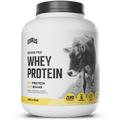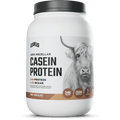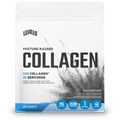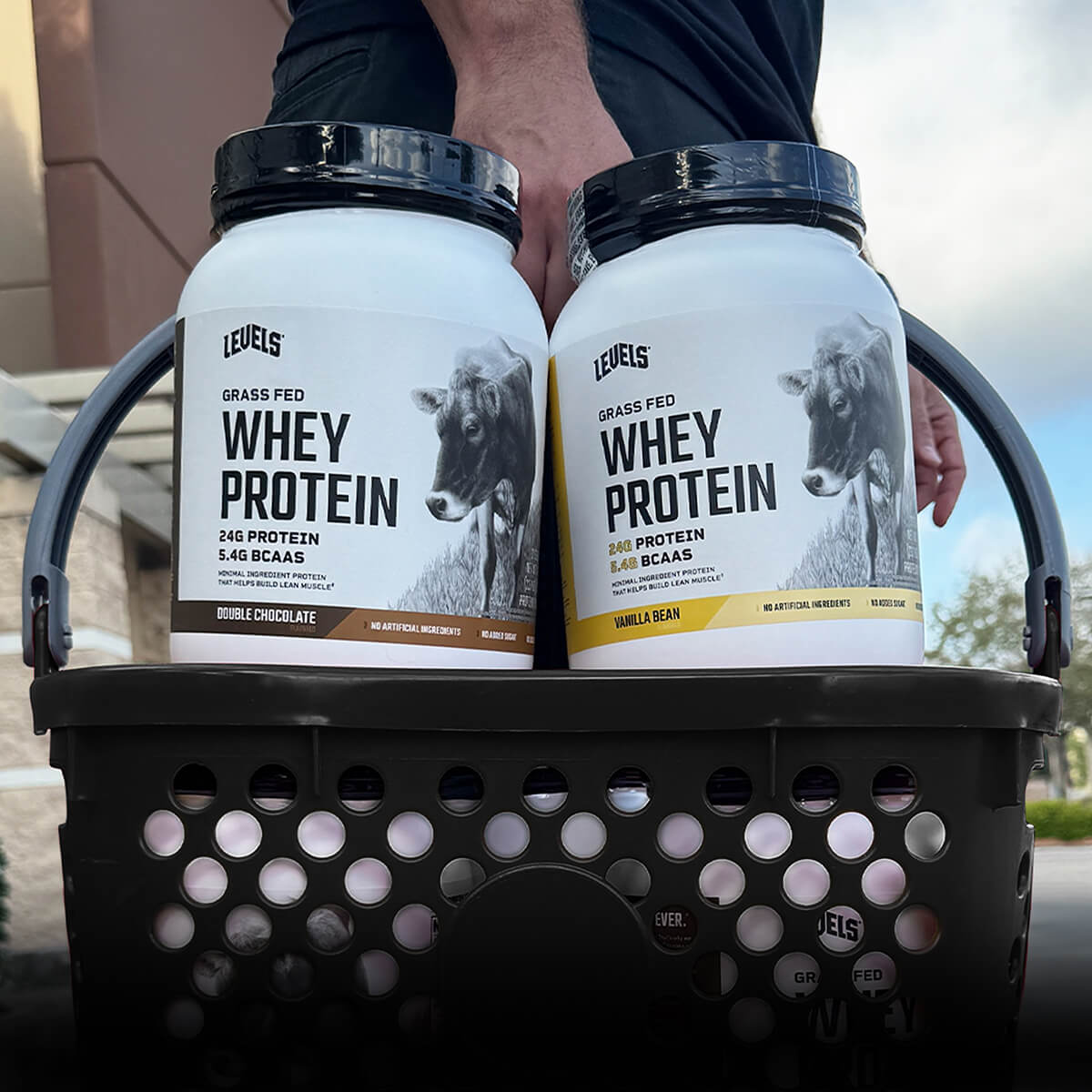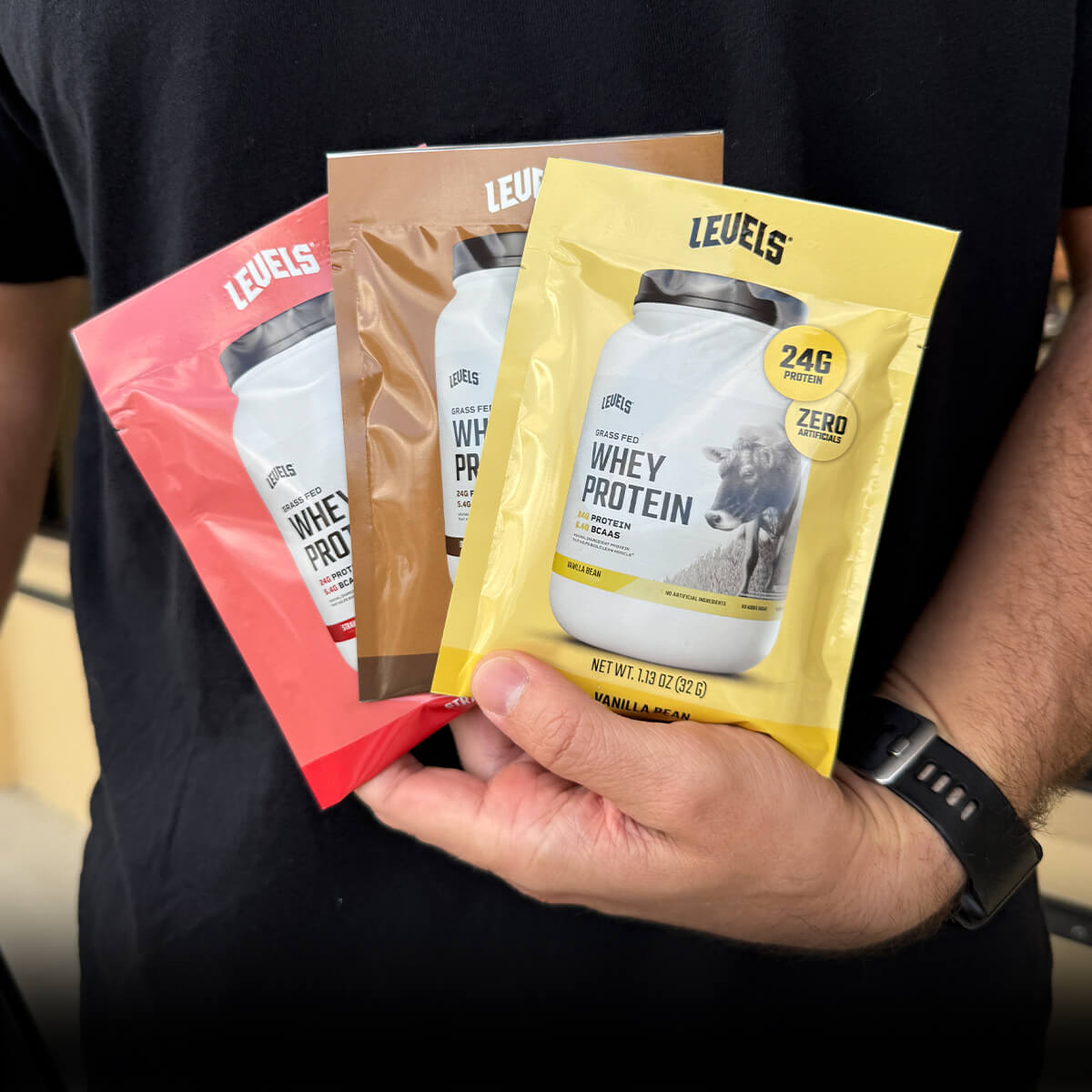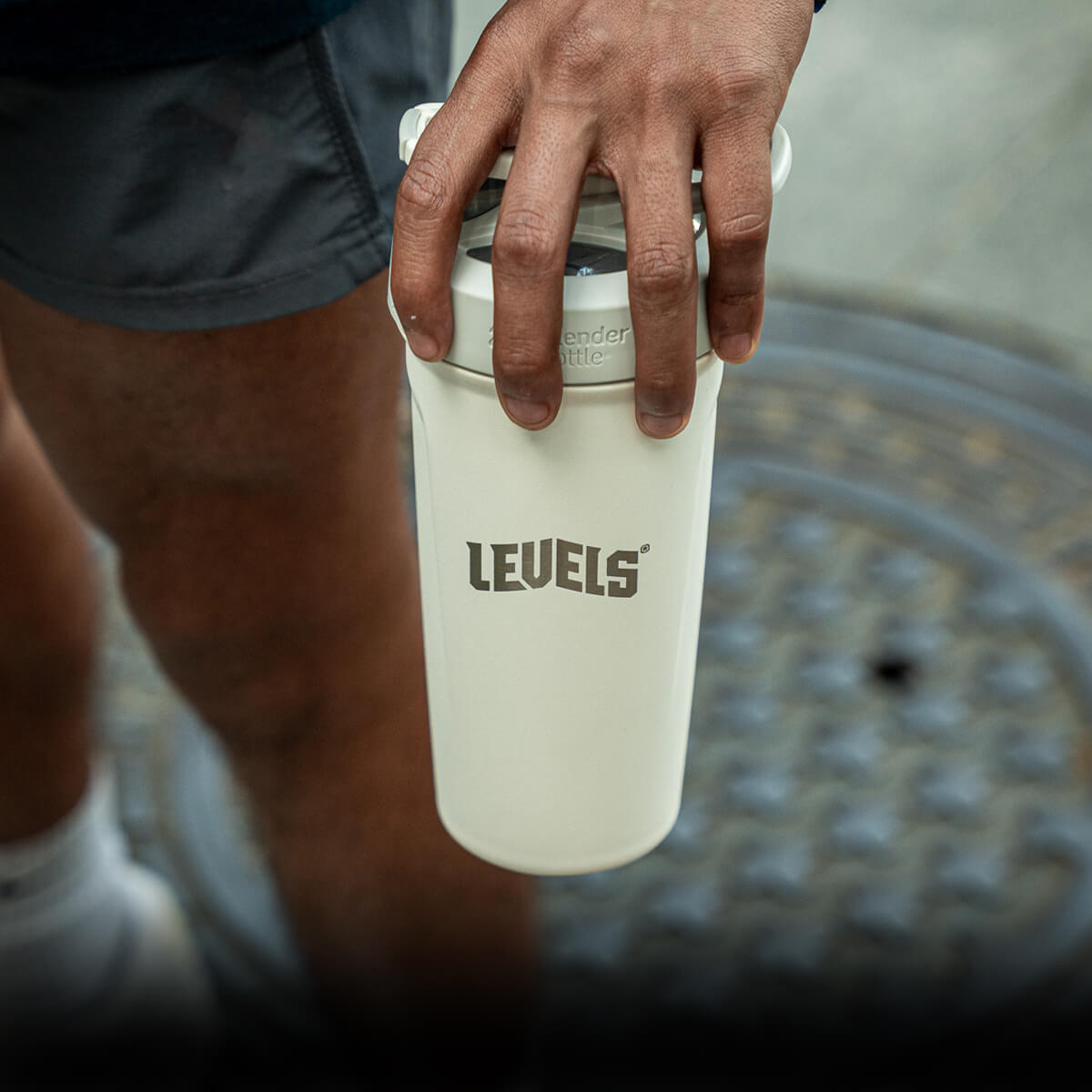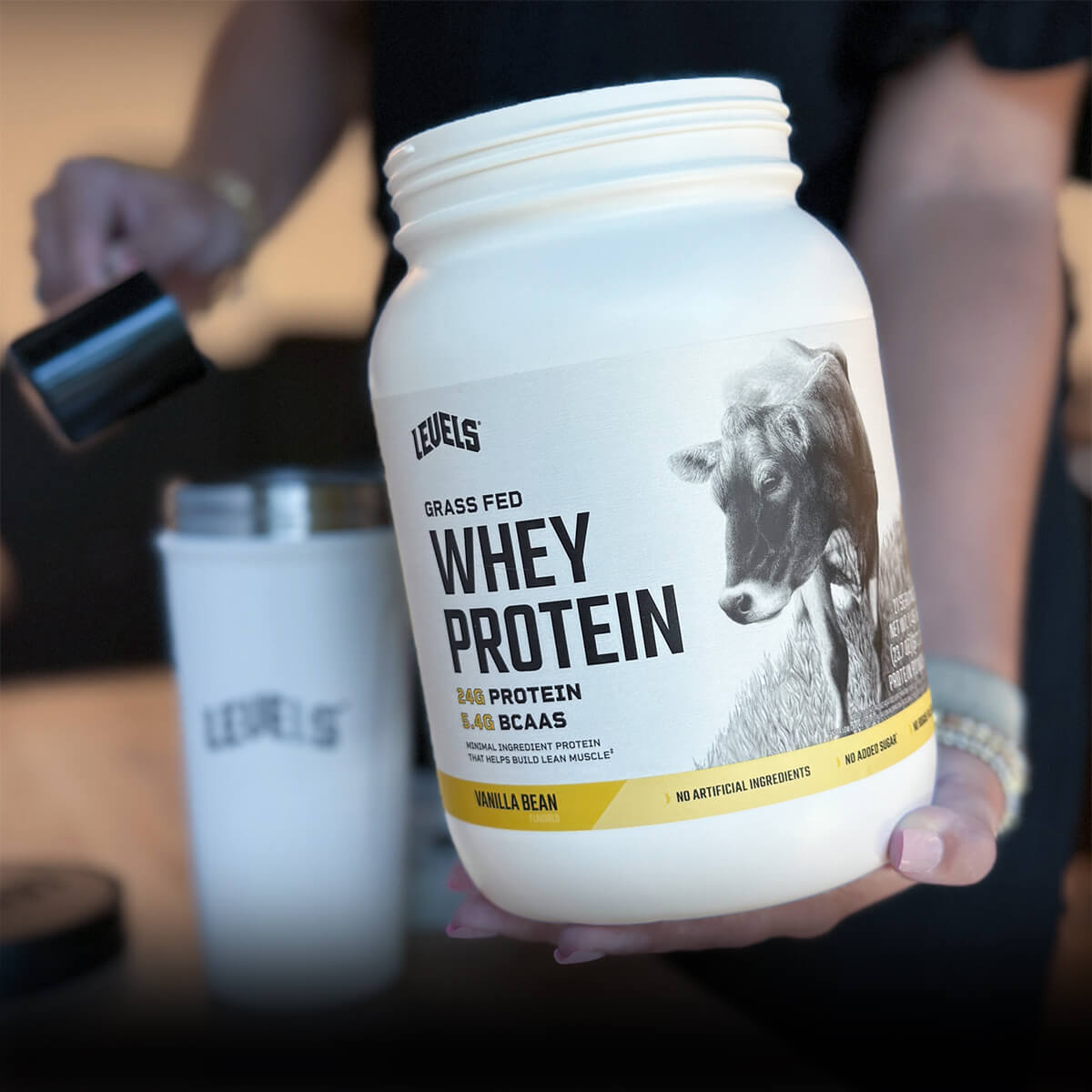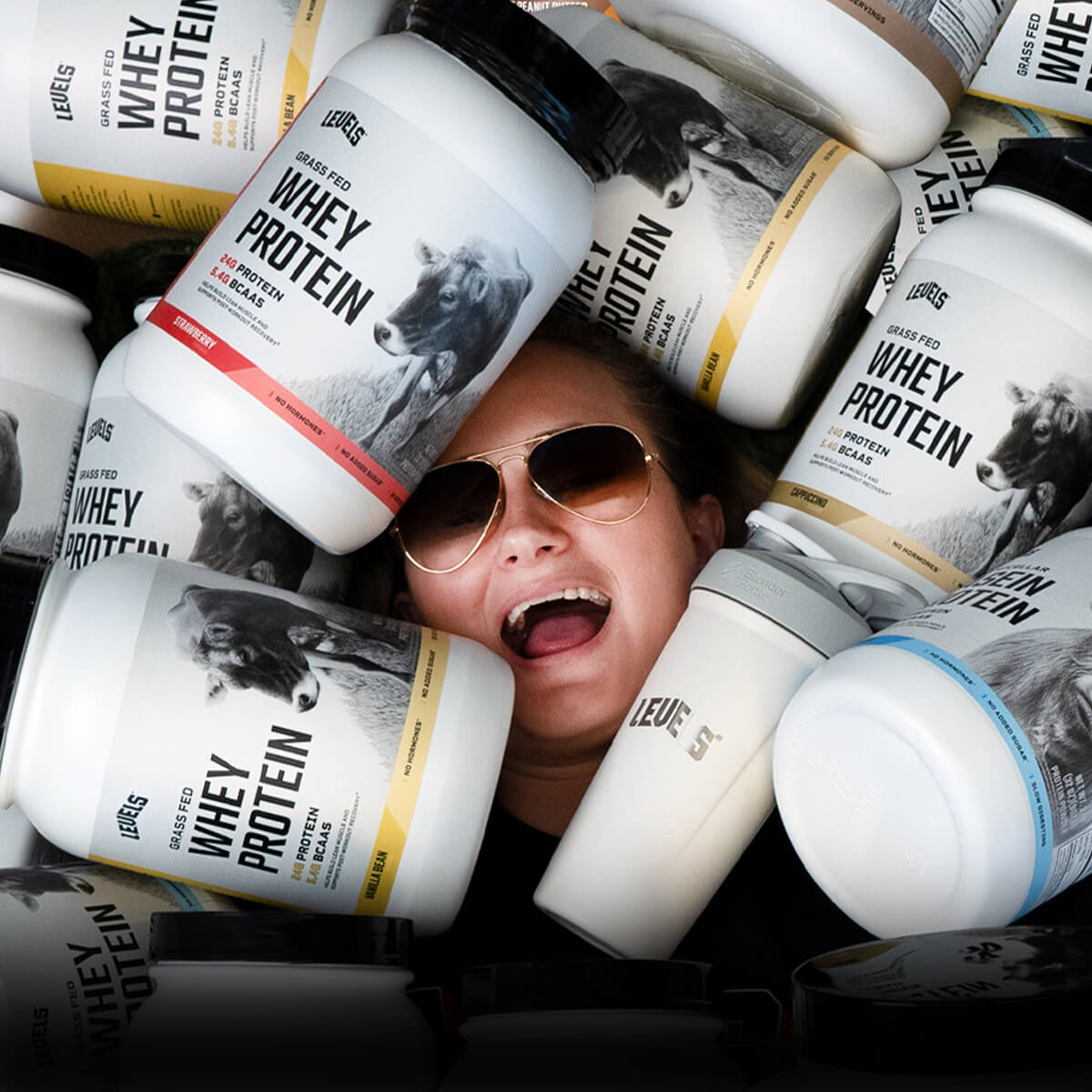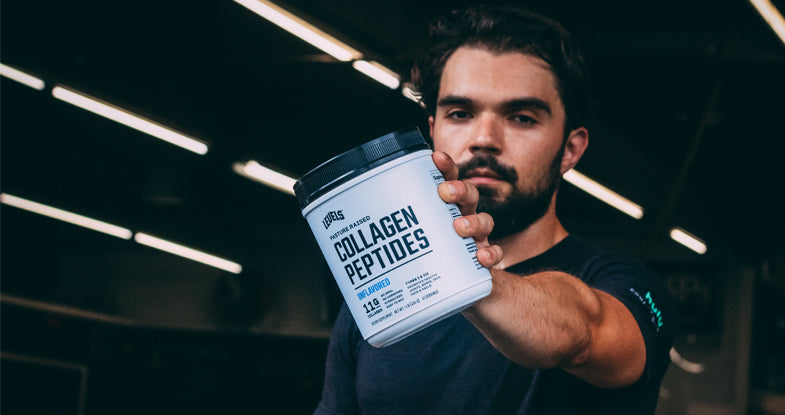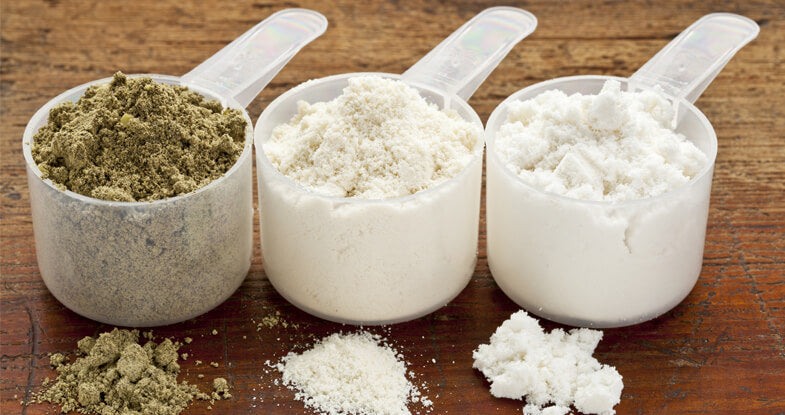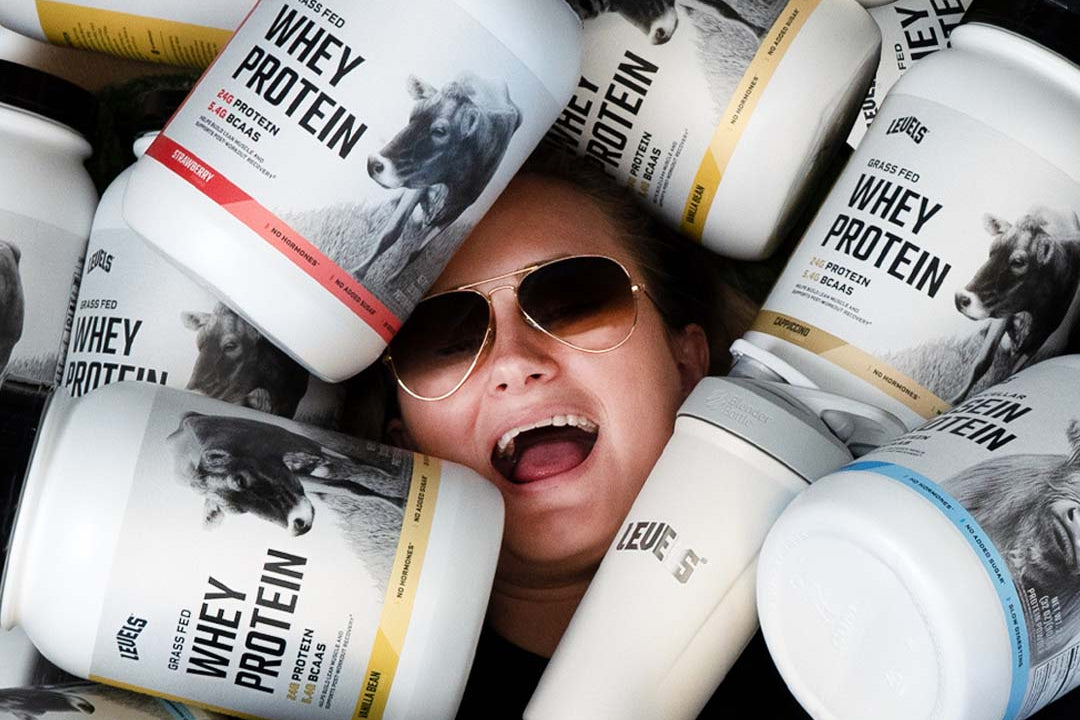You might not think of peas as the ideal protein source, but pea protein powder is a popular supplement to boost protein intake among vegetarians and vegans.
Additionally, some omnivores also use pea protein as a meal replacement or post-workout drink.
But how does pea protein stack up against whey protein, the reigning champ of protein powders?
Keep reading for an in-depth comparison of pea protein and whey protein, their pros and cons, and how to decide which is best for you.
What Is Pea Protein?
Pea protein is a complete vegan protein sourced from yellow or golden peas, Pisum sativum.
Manufacturers make pea protein by milling dry or wet peas into a flour, then separating out the fiber and starch components using water[*].
And depending on the process, the end product is either called pea protein isolate or pea protein concentrate. As the name suggests, pea protein isolate has higher protein content and fewer carbs than pea protein concentrate.
People typically add pea protein powder to protein shakes and smoothies.
And at the grocery store, you can find pea protein-based “cheese,” “chicken,” and other animal product substitutes.
Pea Protein Nutrition Facts
A 30-gram serving of pea protein isolate contains:
- 120 calories (kcal)
- 25.2 grams of protein
- 0.5 grams of carbs
- 2 grams of fat
In contrast, a 30-gram serving of pea protein concentrate has:
- 130 calories (kcal)
- 23.5 grams of protein
- 4 grams of carbs
- 2.2 grams of fat
Also, unlike many plant-based proteins, pea protein powder is a complete protein source, meaning it has all 9 essential amino acids your body requires[*].
Here’s the amino acid breakdown for pea protein isolate per 100g, starting with the essential amino acids (EAAs)[*]:
- Threonine 2.5g
- Methionine 0.3g
- Phenylalanine 3.7g
- Histidine 1.6g
- Lysine 4.7g
- Valine 2.7g
- Isoleucine 2.3g
- Leucine 5.7g
- Tryptophan 0.94g
Therefore, the total EAA content is 23.6 grams per 100g.
And here’s the non-essential amino acid content per 100g of pea protein[*]:
- Serine 3.6g
- Glycine 2.8g
- Glutamic acid 12.9g
- Proline 3.1g
- Cysteine 0.2g
- Alanine 3.2g
- Tyrosine 2.6g
- Arginine 5.9g
Aside from EAAs, the remaining total amino acid content of pea protein is 34.4g per 100g.
What Is Whey Protein?
Whey protein is a type of dairy protein. Therefore, whey protein is an option for vegetarians as well as omnivores (but not vegans).

Most whey found in protein powder supplements comes from the cheesemaking industry.
Additionally, whey protein contains a mixture of different protein fractions, which are related but distinct types of protein that have various benefits[*].
The protein fractions in whey are called beta-lactoglobulin, alpha-lactalbumin, bovine serum albumin, and immunoglobulins[*].
Whey protein is a high-quality complete protein source, meaning it contains all the essential amino acids you must obtain from your diet.
And people use whey protein as a post-workout shake, for meal replacement purposes, and for high-protein baking or other recipes.
The two most popular forms of whey protein powder are whey protein concentrate and whey protein isolate.
Whey concentrate is economical and contains more intact protein fractions and a few more carbs, while whey isolate costs more and has a slightly higher overall protein content.
If you’re curious about the other differences between the two major types of whey protein, check out Whey Protein Isolate vs. Concentrate: Everything You Need to Know to learn more.
Whey Protein Nutrition Facts
A 32-gram scoop of unflavored grass-fed whey protein concentrate contains:
- 130 calories (kcal)
- 25 grams of protein
- 3 grams of carbs
- 2 grams of fat
In contrast, a typical 32-gram serving of whey protein isolate has:
- 120 calories (kcal)
- 27 grams of protein
- <1 gram of carbs
- 0.5 grams of fat
And because it’s a complete protein that’s rich in essential amino acids, researchers in the field of nutrition science consider whey to be one of the highest-quality dietary proteins[*].
Here’s the amino acid content per 100g of whey, beginning with the 9 EAAs[*]:
- Threonine 5.4g
- Methionine 1.8g
- Phenylalanine 2.5g
- Histidine 1.4g
- Lysine 7.1g
- Valine 3.5g
- Isoleucine 3.8g
- Leucine 8.6g
For whey, the total EAA content is 34.1 grams per 100g.
And the non-essential amino acid content per 100g of whey protein is as follows[*]:
- Serine 4.0g
- Glycine 1.5g
- Glutamic acid 15.5g
- Proline 4.8g
- Cysteine 0.8g
- Alanine 4.2g
- Tyrosine 2.4g
- Arginine 1.7g
In summary, whey protein’s total non-essential amino acid content is 34.9g per 100g.
Pros and Cons of Pea Protein vs. Whey
Now that you know the basic facts of each form of protein, let’s see what scientific studies say about their advantages and drawbacks.
For Exercise Recovery and Physical Performance
The peer-reviewed research is clear that consuming a protein shake around your workout speeds your recovery and enhances your physical performance[*].

But what’s less certain is whether there’s a significant difference between drinking whey protein and pea protein for your recovery shake.
For the most part, there’s a lack of head-to-head data comparing whey protein and pea protein for recovery purposes.
The lone study so far compared pea protein vs. whey in men performing 8 weeks of high-intensity functional training (HIFT)[*].
Researchers found no significant performance effect for either pea or whey protein.
But ironically, they didn’t detect any training effect on “workout of the day” (WOD) performance for either group, either.
In other words, the study didn’t show any difference or advantage to either form of protein over the other, but the study participants also didn’t make any progress on their workouts for a full two months. Ouch.
Therefore, there’s currently not enough data to conclude whether pea protein or whey is better for recovery and exercise performance.
However, far more studies support whey for recovery purposes compared to pea protein[*][*].
And as we’ll discuss shortly, whey contains more EAAs and BCAAs, meaning it may offer increased recovery benefits compared to pea protein[*][*].
Muscle-Building Effectiveness
Similar to the recovery question, there aren’t many direct comparisons yet to answer whether pea protein or whey protein works better for building muscle.
The only such study, published in 2015, found no difference between the two types of protein for biceps thickness after 12 weeks of resistance training[*].
A better question might be: does one form of protein increase lean body mass more than the other? But unfortunately, no one has done that research yet.

However, generally speaking, experts consider whey protein the best choice for getting bigger[*].
And numerous studies show whey has more anabolic (muscle-building) effect compared to most plant proteins[*].
As the authors of a 2019 review from the journal Nutrients write:
“Plant-based proteins have less of an anabolic effect than animal proteins due to their lower digestibility, lower essential amino acid content (especially leucine), and deficiency in other essential amino acids, such as sulfur amino acids or lysine....plant amino acids [are not typically] used for muscle protein synthesis”[*].
If you’re hungry for more details on the differences between whey protein and various plant-based proteins, head over to Whey Protein vs. Plant Protein: The Differences Explained.
Protein Quality and Bioavailability
Protein quality refers to the amount of amino acids found in a given protein source, while bioavailability describes how well your body can digest them.
The two most common measures of protein quality and bioavailability are called PDCAAS (protein digestibility corrected amino acid score) and DIAAS (digestible indispensable amino acid score).
And in both cases, studies show that whey protein is the clear winner over pea protein[*][*].
Practically speaking, that means whey protein is more nutritious and, given an equal intake, provides your body with more key amino acids compared to pea protein.
For more insight into how your body utilizes protein, read Protein Absorption: Everything You Need to Know.
Now, here’s how the two types of protein stack up as far as amino acid content and quality scores.
Whey protein (per 30g serving):
Pea protein (per 30g serving):
Also, keep in mind that BCAA content, and especially leucine content, are the main factors that predict how well a protein source works to enhance workout recovery and muscle protein synthesis[*].

Therefore, while pea protein is a decent complete source of protein, there is unlikely to be any benefit over whey for omnivores, vegetarians, and people without dairy allergies or sensitivities.
Pea Protein vs. Whey Protein: How to Decide
For non-vegans, grass-fed whey is the top pick for adding protein to your diet.
Unless you’re vegan or have an allergy to whey protein, there’s simply no real evidence-based reason to choose pea protein over whey.
Additionally, whey protein is supported by far more studies, has a greater concentration of essential amino acids and branched-chain amino acids, and may be more effective for supporting post-workout recovery and muscle growth.
But the other dairy protein, casein, is also a wise choice for omnivores and vegetarians, especially before bed.
To learn more about why you might use casein as opposed to whey, read Casein vs. Whey: The Similarities and Differences Explained.
